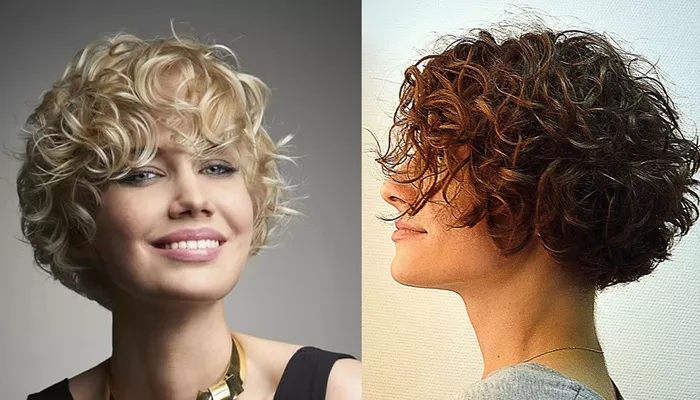Curly hair’s unique spiral formation stems from its asymmetrical follicle shape. Unlike straight hair that grows from round follicles, curls emerge from oval or irregularly shaped openings in the scalp. This structural difference causes the hair shaft to bend as it grows, creating natural coils. The more pronounced the follicle’s flattening, the tighter the curl pattern becomes. This biological blueprint also affects moisture retention – the twists in each strand create gaps in the hair’s cuticle layer, making curly hair more porous and prone to dehydration.
Understanding porosity levels becomes critical for styling success. High-porosity curls absorb moisture quickly but lose it faster, requiring heavier creams and sealing oils. Low-porosity types resist moisture absorption, needing lightweight liquid-based products. A simple float test determines porosity: place a strand in water – if it sinks immediately, you have high porosity; if it floats, low porosity. This knowledge directly informs product choices and styling approaches.
Cutting Techniques That Enhance Natural Curls
Traditional scissor-over-comb methods often fail curly textures by creating uneven weight distribution. Advanced dry-cutting approaches like the “Rake and Shake” method allow stylists to shape curls while fully formed. The process involves separating curls into sections, finger-raking to assess natural fall, then strategically snipping to remove bulk without disrupting the curl’s innate spring. For tighter coils, “twist-cutting” – trimming while hair is in two-strand twists – ensures even length retention and minimizes shrinkage surprises.
Face shape plays a pivotal role in curly haircuts. Round faces benefit from vertical layers that add height at the crown, while square jawlines soften with side-swept curls that graze the cheekbones. Long faces gain balance through chin-length bobs that create horizontal volume. The “triangle theory” guides many curly cuts: wider sections at the bottom suit heart-shaped faces, whereas inverted triangles (narrower at the jaw) complement rectangular features. Always consult stylists who analyze your features in multiple states – wet, dry, and styled – to predict how cuts behave in real-life conditions.
Daily Styling Routines for Optimal Definition
The “Praying Hands” application method revolutionizes curl definition. After washing, section hair and smooth products vertically from roots to ends using flat palms, preserving the curl’s natural clumps. This technique minimizes frizz by avoiding the pulling motion of raking or scrunching. For enhanced hold, follow with “glazing” – coating the hair’s surface with a thin layer of gel using open palms without disturbing the curl formation beneath.
Microplopping (gentle blotting with a microfiber towel) replaces rough towel-drying that causes friction frizz. The “Hover Diffusing” technique maintains definition during drying: hold the dryer 6 inches away from hair, moving constantly in a circular pattern until 80% dry. Finish with cold air to seal cuticles. Nighttime preservation involves “Medusa Clipping” – loosely pining sections atop the head with claw clips to prevent flattening, covered by a silk bonnet.
Breakthrough Products Changing Curly Care
Innovative formulations now target specific curl challenges. Polyquaternium-55 polymers in modern gels provide humidity resistance without crunchiness. Rice water-infused leave-ins strengthen hair shafts through amino acids and inositol. For color-treated curls, bond-building masks with citrulline and silk proteins repair damage while maintaining vibrant hues.
A game-changing trend emerges with “pre-poos” – pre-shampoo treatments using oils or conditioners to protect curls during cleansing. Coconut oil applied 30 minutes before washing prevents hygral fatigue (swelling damage from water absorption). Clay-laden scalp scrubs with tea tree oil now address buildup issues common with heavy curly products, dissolving residues without stripping natural oils.
Redefining Curly Hair Aesthetics in Modern Fashion
The “Curl Revolution” in haute couture challenges old straight-haired beauty standards. Runways now showcase models with untouched ringlets, styled simply with glossy serums to emphasize natural texture. Editorial shoots experiment with “wet-look” gels on coils for avant-garde shine, while red carpet styles favor intricate updo hybrids – half braided, half loose curls cascading down backs.
Everyday wear embraces “wash-and-go” sophistication. The key lies in perfecting the technique: applying products in the shower to soaking hair, then air-drying with minimal touching. For corporate environments, sleek ponytails with brushed edges and a defined part maintain professionalism while allowing curls to flow freely at the nape.
Overcoming Common Curly Hair Dilemmas
Shrinkage management requires strategic stretching. Banding – securing damp hair in loose elastic bands along the length – gently elongates curls without heat. Silk wraps during drying create tension-free stretch. For frizz control, hybrid serums with marula oil and silicone derivatives form breathable barriers against humidity.
Transitioning from heat damage demands patience. Gradually trim straightened ends while adopting protein treatments like gelatin masks to rebuild curl memory. The “greenhouse effect” method accelerates recovery: applying deep conditioner, covering with a plastic cap, and using body heat to enhance product penetration.
Future Directions in Curly Hair Technology
3D-printed scalp treatments now customize product formulations based on individual curl maps and porosity tests. Laser therapies stimulate dormant follicles in thinning edges, particularly beneficial for tight coil patterns prone to traction alopecia. Biotech companies develop “smart conditioners” with pH-responsive nanoparticles that release moisture only when hair becomes dry.
Conclusion
The curly hair movement evolves beyond aesthetics into a cultural statement of authenticity. As more people abandon damaging straightening rituals, the focus shifts to curl literacy – understanding your unique pattern’s needs and celebrating its inherent beauty. This paradigm change redefines salon experiences, product development, and societal perceptions, ultimately proving that healthy curls require not just styling skills, but a fundamental respect for their biological wisdom.
True curly hair mastery lies in harmonizing science and art – using technical knowledge to enhance what nature provides, while allowing individual personality to shine through every spiraled strand. With these insights, anyone can transform their curls from a styling challenge into their most powerful asset.
Related topics:
6 Stylish Short Curly Hairstyles for Women Over 50 Who Wear Glasses
How to Make Your Curly Hair Silky: A Complete Guide to Achieving Smooth, Shiny Curls
How to Style Curly Hair Bangs: A Complete Guide to Perfect Curls and Fringes


